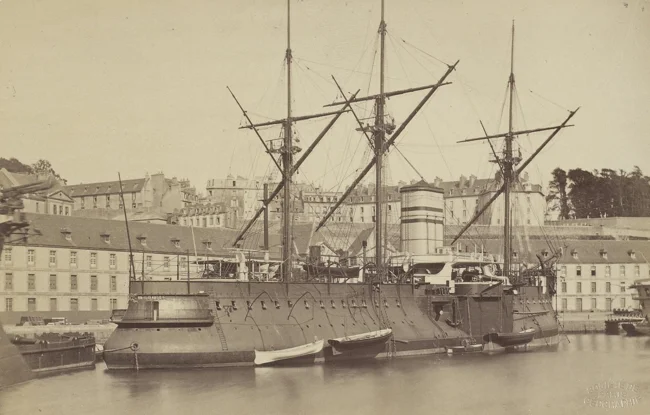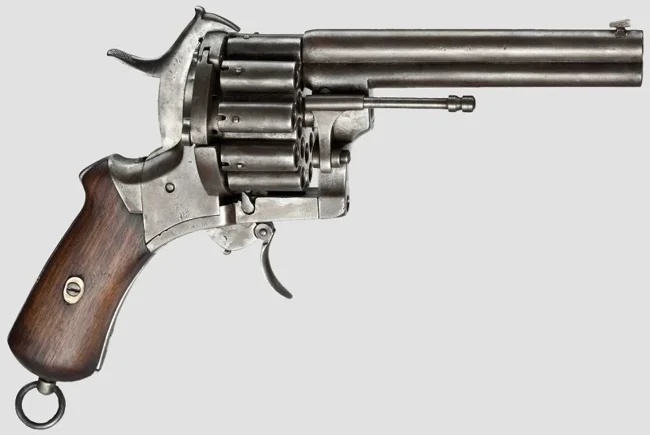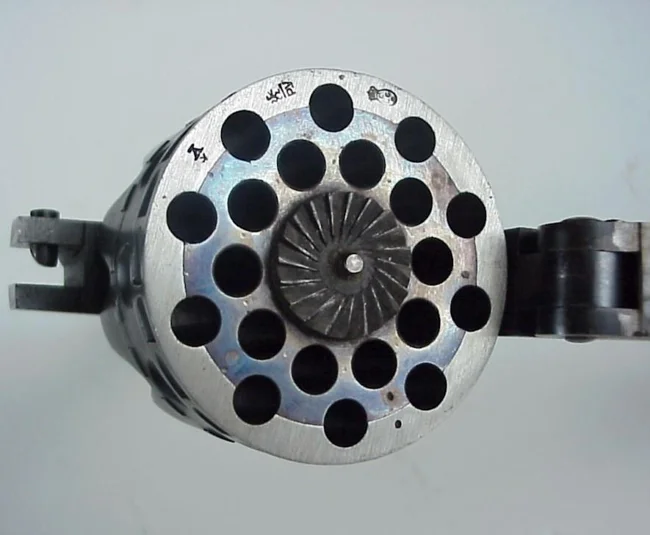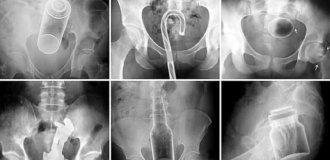Even at the time when, it would seem, the niche of "pocket" weapons was occupied by "Brownings" and their numerous clones, "the Belgian French" created THIS, and the "very real" French from the Manufrance company sold this construction through their "mail order" catalog, which made the revolver basically famous. 
So, the revolver, named in the French catalog "Le Redoutable" ("Terrible, threatening" - by the way, this is how the French liked to call their ships). 
For example, this was the name of the French battleship, which at one time became the world's first all-steel warship, and not "armored firewood"
... was, in fact, a repetition of ideas that had "rotted" about fifty years ago at the time of its creation in 1910 by the Liege firm Manufacture d'Armes Henrion, Dassy & Heuschen - because it very much resembled the double-barreled pin revolvers of the time of Lefaucheux. 
For example, here is the Eugene Lefaucheux pin revolver from 1862: the same 2 barrels and 20 cartridges, even the caliber is close: 7 mm
Here, however, the designers used more modern centerfire cartridges and made the revolver frame break-type... but "purely French": instead of folding the barrel with the cylinder down a la "Smith & Wesson" of the same years, here they had to be turned towards you, since the hinge on the frame was located at the top, not the bottom.
To be historically fair, the first Smith & Wessons were made exactly the same way, but later, for obvious reasons, the company switched to a lower hinge, which is considered "canonical", and the original Smith & Wesson No. 1 design was safely forgotten by the time Le Redoutable appeared. 
The revolver was produced in two versions - with a 20-round drum (that is, with two rows of 10 chambers) for "Velodog" cartridges of 6.5 or 6.35 mm caliber and with a 16-round drum for .32 S&W cartridges (or, in the designation more familiar to the French - 7.65 mm). The second version also received its own name in the catalogs - Le Terrible, which, incidentally, is one of the synonyms for "redoutable", and at the same time the name of another French battleship. 
The extractor is manual, completely covering the cartridges of the "inner" circle and half (or slightly more than half, depending on the caliber and year of manufacture) - "outer". In the loaded drum, the rims of the cartridges protruded above the plane of the extractor, allowing the simplest implementation of the work of two strikers fixed with screws on the trigger: regardless of which of them the primer was under, the second fell into the empty space between the cartridges. 
However, this did not guarantee that it would not hit the extractor: pay attention to the characteristic marks between the chambers of the "inner" row. 
The revolver could not be called particularly successful - it, costing as much as a "Luger" or "Mauser", was significantly less convenient to carry due to the inevitably large cylinder, and 20 or 16 cartridges, alas, were low-power, so the ability to "spit" bullets on an opponent was quite questionable. Nevertheless, it was produced at least until 1928 - well, even the strangest weapon eventually finds a buyer.
Add your comment
You might be interested in:





















